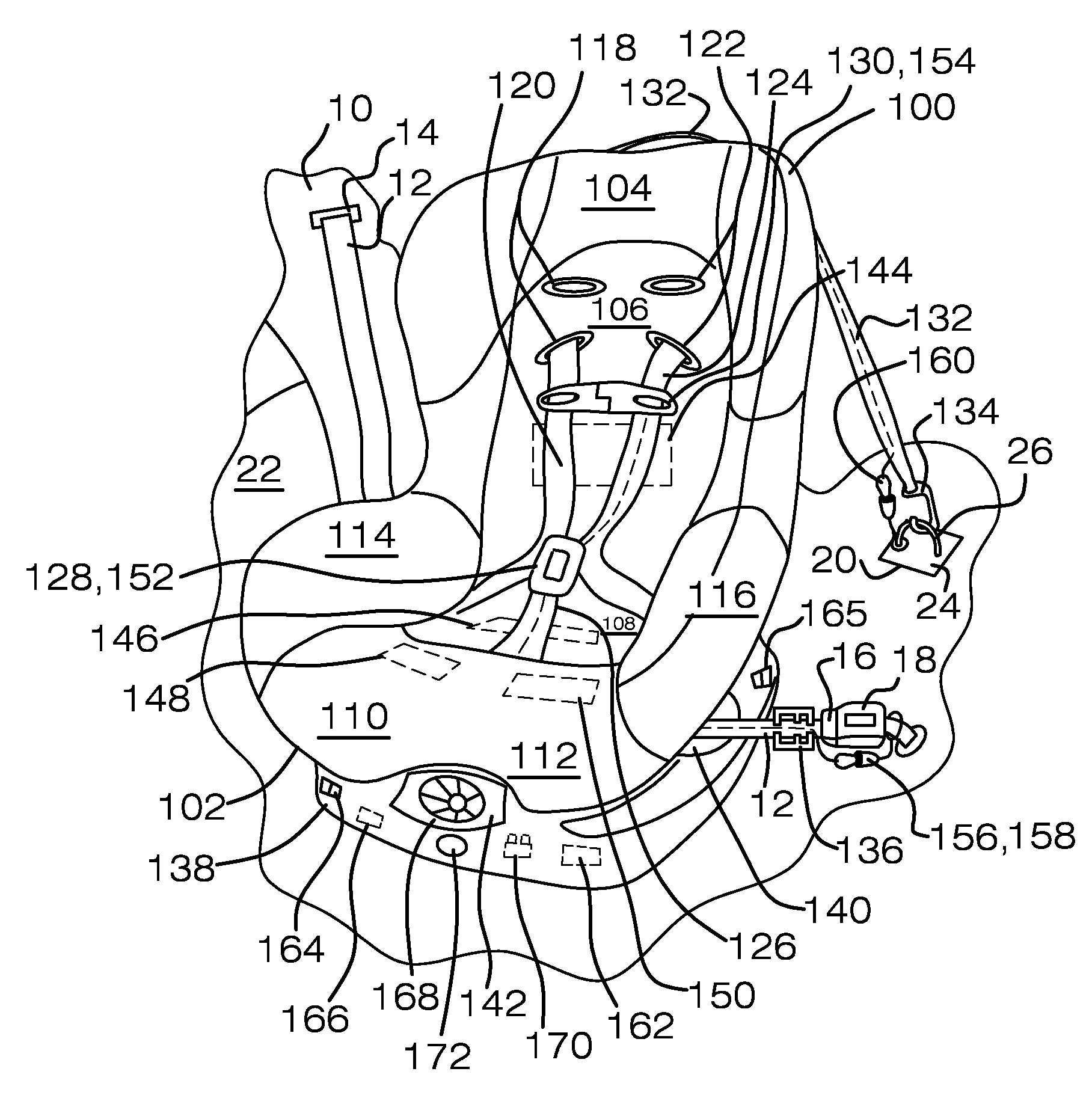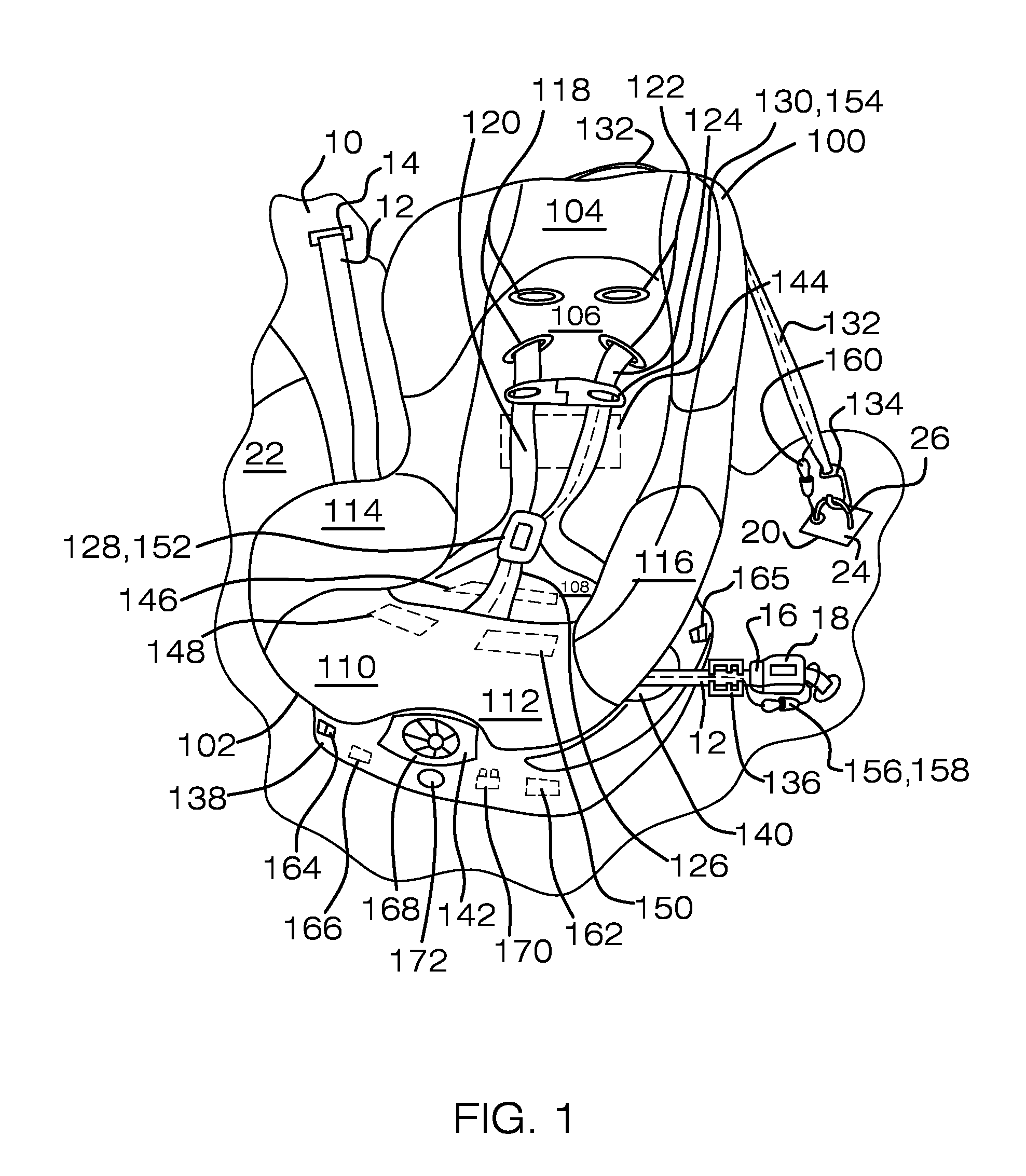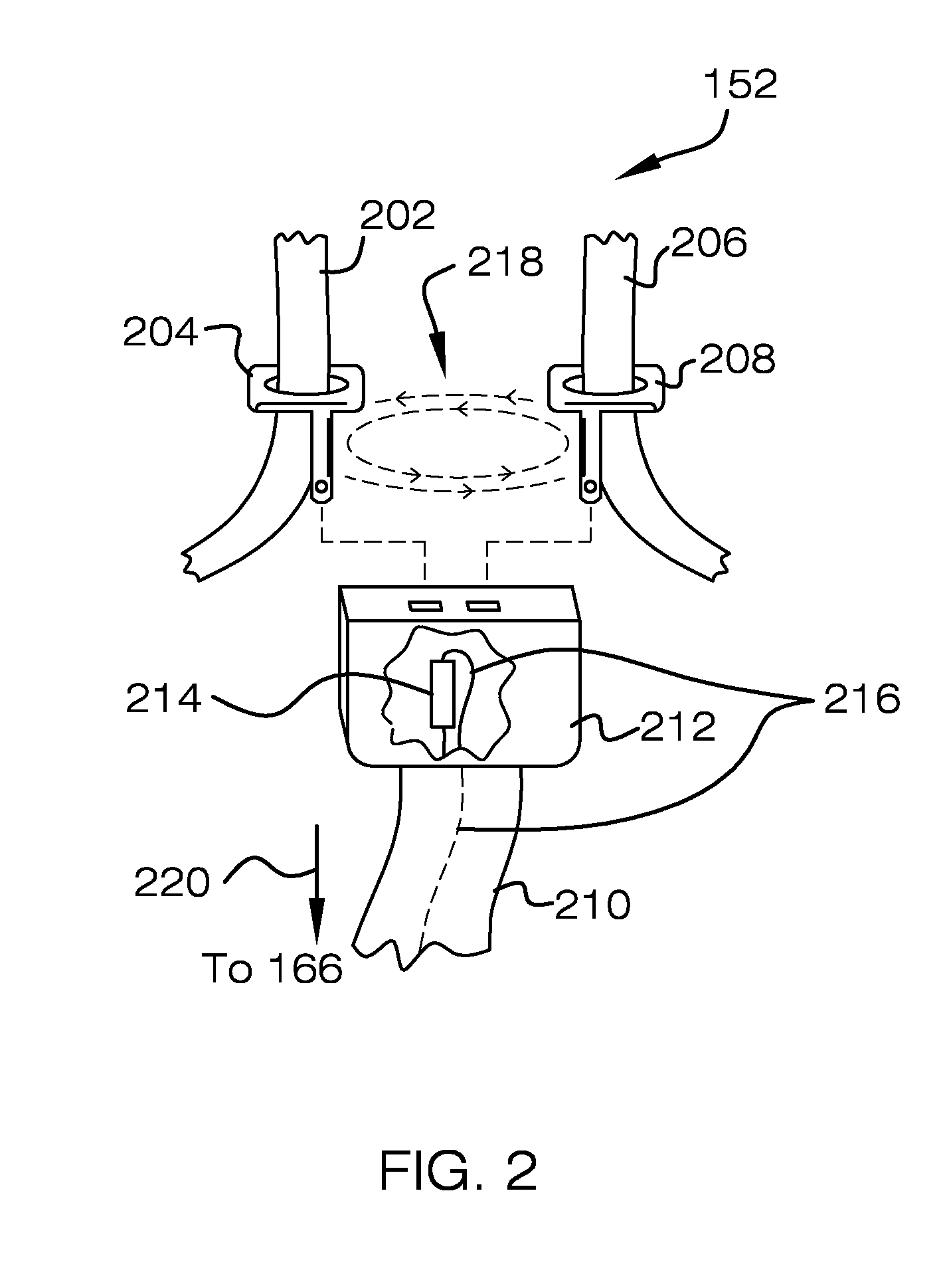Warning system for child restraint system
a child restraint and warning system technology, applied in the field of electric communication, can solve the problems of children receiving a staggering amount of damage, loss of the ability to read and write, and memory impairment,
- Summary
- Abstract
- Description
- Claims
- Application Information
AI Technical Summary
Problems solved by technology
Method used
Image
Examples
Embodiment Construction
[0017]FIG. 1 is an isometric view of a child restraint system 100 in a vehicle 10. Child restraint system 100 may be a restraint system equipped with safety straps to hold a child in a seated position in vehicle 10. As set out in more detail below, child restraint system 100 may include sensors that may respond to relative conditions between a child, child restraint system 100, and vehicle 10 by providing humanly perceptible signals in response to the attainment of predetermined conditions.
[0018]Vehicle 10 may include a lap / shoulder belt 12 extending from a back seat retractor 14 and having a lap / shoulder belt buckle tongue 16 configured to mate to a vehicle seat belt buckle 18 secured to vehicle 10. Vehicle 10 additionally may include a latch anchor 20 and door 22. Latch anchor 20 may have a metal plate 24 attached to vehicle 10 and latch anchor ring 26 attached to metal plate 24. Generally, lap / shoulder belt 12 and latch anchor 20 may aid in securing child restraint system 100 to ...
PUM
 Login to View More
Login to View More Abstract
Description
Claims
Application Information
 Login to View More
Login to View More - R&D
- Intellectual Property
- Life Sciences
- Materials
- Tech Scout
- Unparalleled Data Quality
- Higher Quality Content
- 60% Fewer Hallucinations
Browse by: Latest US Patents, China's latest patents, Technical Efficacy Thesaurus, Application Domain, Technology Topic, Popular Technical Reports.
© 2025 PatSnap. All rights reserved.Legal|Privacy policy|Modern Slavery Act Transparency Statement|Sitemap|About US| Contact US: help@patsnap.com



